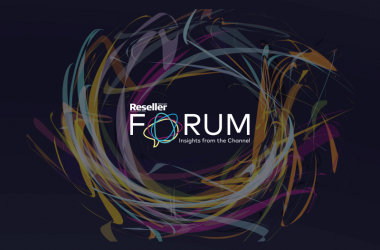 Luke Brown, VP and GM, EMEA, Indian and LATAM, Digital Guardian, discusses the vast changes happening in the region’s threat landscape and how partners can take it as an opportunity to further their cybersecurity offerings.
Luke Brown, VP and GM, EMEA, Indian and LATAM, Digital Guardian, discusses the vast changes happening in the region’s threat landscape and how partners can take it as an opportunity to further their cybersecurity offerings.
How many years have you been participating at GISEC? What kind of value do you expect to gain from the show?
This is the first time we are participating at GISEC. We will be exhibiting along with our partner, Credence Security. We expect to have deep conversations with prospects and understand their needs and security pain points in more detail, as well as learn about the emerging trends within the industry from firsthand experience.
What is the primary highlight of your participation at GISEC 2016?
Our theme is ‘the evolution of data protection’ and we will be showcasing the Digital Guardian Data Protection Platform.
What do you believe are the technology trends that will impact the security landscape regionally?
- The growing need of security for IoT
- Critical Infrastructure Protection
- Continued migration to cloud from legacy environments, and the associated data protection needs that come with it
- Better detection against data breaches and theft.
How can partners go the extra mile to leverage the opportunities in the dynamic security space?
Partners need to closely evaluate which vendors they’re working with and how well they integrate with other solutions, as well as how efficiently they complement existing technologies. This way customers get the most out of their investment by adding new security technologies that add deeper protection without replacing existing infrastructure.
What new threats are seen emerging in the cyberspace? How are regional enterprises countering these threats?
The volatility of relations between pro-western states and countries like Iran as well as terrorist organisations, will continue to fuel large scale attacks against not only nations states but also representatives of those states like Press, Oil & Gas companies and financial institutions. It is most likely however that these types of attacks will be driven in larger proportion by non-state actors like the cyber caliphate, Syrian Electronic Army (SEA), etc.
A big issue is the lack of preparedness of organisations in the Middle East. Until recently, cyber threats have been considered an external issue and handled accordingly. Although some countries like the UAE and Pakistan have begun implementation of laws and institutions to handle current and future threats this is still the exception rather than the norm. More countries in the region will move to implement laws for sharing and gathering of cybersecurity threats.
How do you see the regional security landscape developing over the next few years?
Over the past year, there has been an increase in cybercrime focused on Middle East business especially financial institutions who are suffering similar attacks as their counterparts in the rest of the world. This will continue to expand due to the financial gains to be made by criminal organisations but also increase as the cyber caliphate, Syrian Electronic Army and other organisations of this type pursue this method to increase their war chests.
A continued increase and sustained use of Tor in the region can be seen as a threat both to the integrity of an organisations’ security and the region’s governments, making it harder to differentiate malicious attacks from inappropriate use.
Organisations sensitive data will continue to be targeted by cyber criminals and motivated threat actors. This trend will continue throughout the next days, weeks and months and only grow larger in scope as more sensitive data becomes digitised and stored in complex IT environments.





